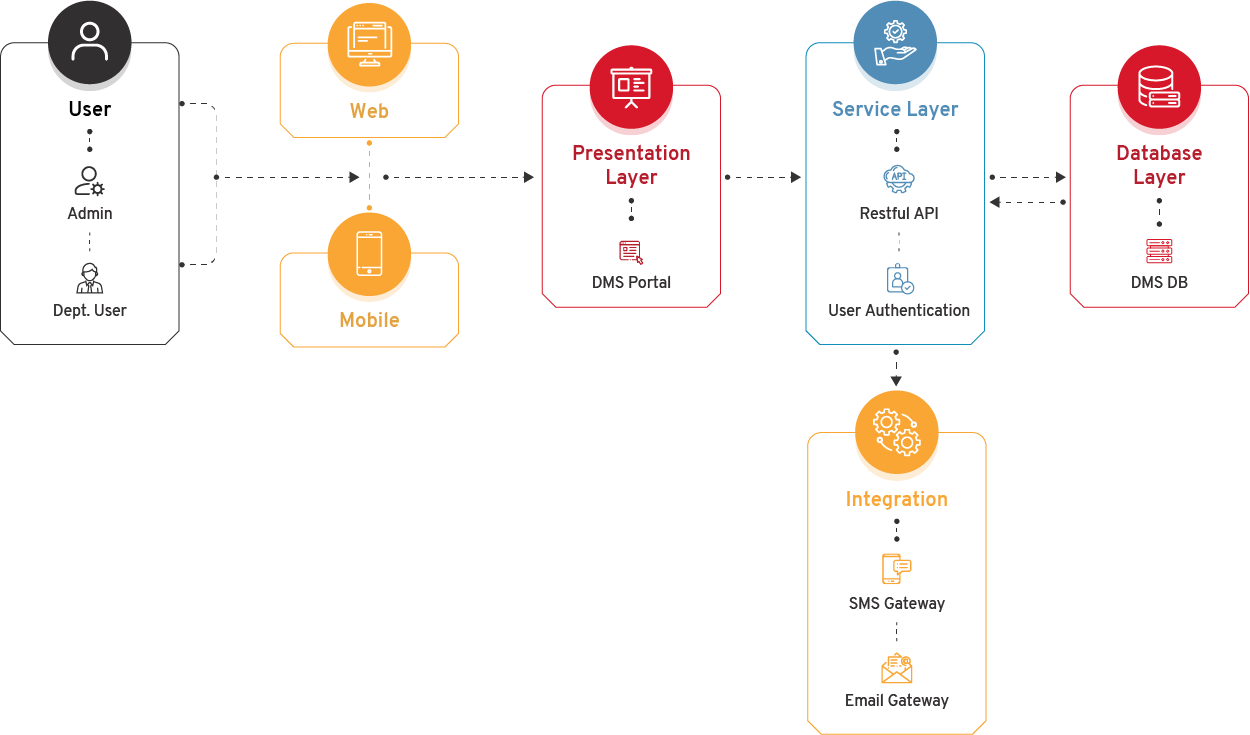We are living in the age of information. As per the internet, we are generating 2.5 quintillion bytes of data every day. The Internet tells us that approximately 90% of that data has been created in the last two years alone, and this pace of data generation is by no means slowing down. If we imagine this much data in the form of files or papers, the stack of papers will cover the distance to the sun and back. Due to the ongoing process of Digitization, people wish to lessen their paper-based work and desire access to their vital documents from anywhere and at any time.
Document Management Systems (DMS) are the finest solution to make this task a much easier one. In today’s data-centric world, executing a quality document management system is to have a straight impact on your organization’s success. The PDF Readers are the best examples of a Document Management System through which you can access the PDF file offline and reserve it to view, print and publish it anytime at any place. DMS's solutions permit users to keep their files on the cloud to enable effortless taking back of information whenever required. If you have all your files organized and readily available, you can stay one step ahead when it comes to creating data-based decisions. Hence, the benefits of implementing document management systems are effective and compounded quickly. The estimated market value of the document management systems industry will be $6.78 billion by 2023. Let’s know the challenges faced before implementing DMS.
Challenges
Identification Mishaps:
It is challenging to recognize and distinguish documents instantly from sensitive information and thus shared openly.
Changing Formats:
The changing space of document formats was challenging for older document management systems. Before, systems were not equipped to handle new document formats like ZIP or audio file in a physical filing cabinet, which is impossible.
Lengthy Onboarding Time:
Depending on the system before; there was a long onboarding time while teaching teams to use the system.
The key benefits of implementing a document management system include:
Benefits:
Saves Time:
You can save a lot of time by organizing your files and making information easily accessible.
Low Digital Mess:
Storing files online can get messy over time, so a centralized repository can clean up the digital mess and arrange how you store essential data.
Increases Security:
When you have a secure platform to store your critical files, your data will be safe automatically. A documentation tool with features like MFA, version control, password protection, audit trail, etc. boosts the security of your IT infrastructure.
Scalability:
When your business grows, the number of documents you manage will grow alongside, but you can scale your business by decluttering your data with the help of a DMS with ease.
Enhances Collaboration:
Cloud-based document management platforms allow easy collaboration from multiple stakeholders no matter where they are located.
Reduces Physical Storage:
Having a big pile-up of paper documents is no way to run a modern business in this digital age. DMS remarkably lowers your physical storage by digitizing all your paper documents.
Eases Accessibility:
A centralized repository of data is easy to access by anyone with the perfect access privilege. Ensuring easy access to business-critical data, you can make informed decisions that will transform into business success.
Promotes Accountability:
When you have valid versioning with an edit history, it develops transparency in your cooperation. It enhances accountability among the stakeholders performing on the files.
Supports Compliance:
A proper DMS is a legal necessity under many data privacy laws. When you have a potent documentation tool, then you can stick to all compliance rules.
Features:
Powerful Search Capabilities:
When the information is not complicated to locate with powerful search capabilities, then finding information in your documentation tool is extremely easy. So, you need to locate files based on metadata, users, titles, relationships, etc.
Access Permissions:
There must be a chance to create tiered authorizations in the documentation platform. It ensures only the right people will have access to the accurate files in your IT infrastructure.
Cloud & Mobile Access:
The files must be stored in the cloud to provide effortless access from any location in the world. The document management system has mobile app capabilities to allow data access on the go.
Version Control & Edit History:
When multiple stakeholders are collaborating on the same file, it is often hard to keep track of the latest version. The documentation system has versioning features with a history of who has made the edits, which helps to prevent duplication and gather information only from the latest files.
Workflow Automation:
Manually managing your day-to-day processes is not a good use of resources’ time. As the DMS should have workflow automation features to automate redundant tasks.
Intuitive User Interface:
Document management is a critical technology so; it comes with a solid user interface. The user interface of the platform is easy to navigate. Most importantly, it is very simple to use even for a new user.
Legacy Integration:
Integration is vital as you are working with multiple disparate tools. The DMS is integrated with the legacy systems in your IT infrastructure.

















